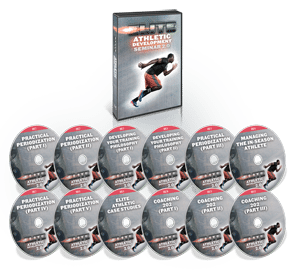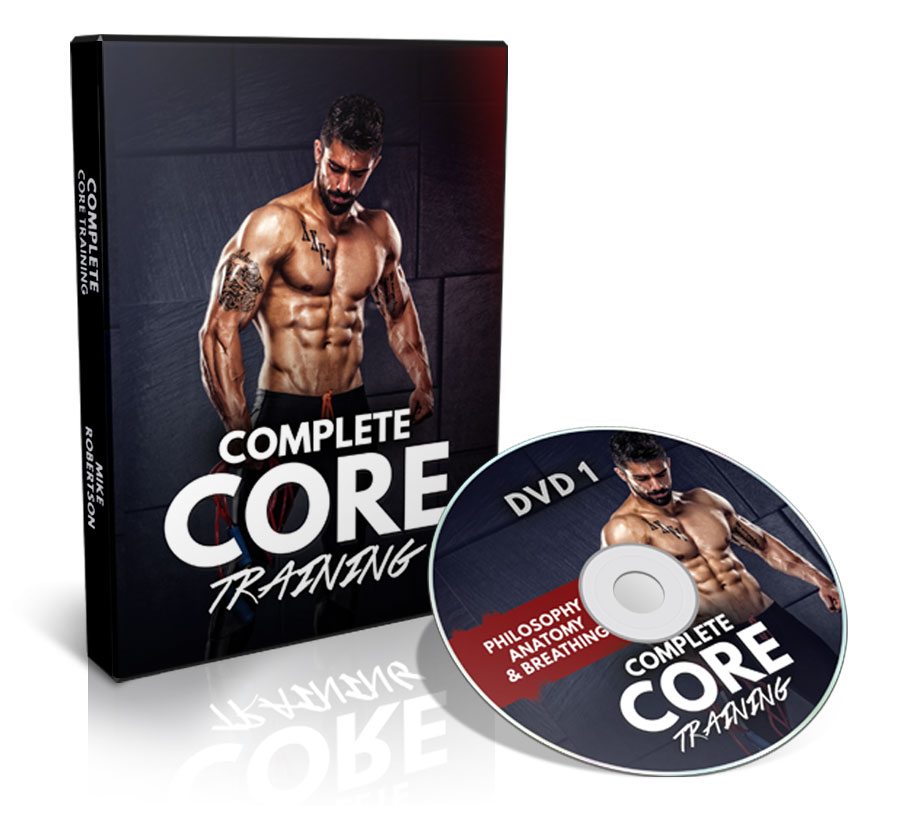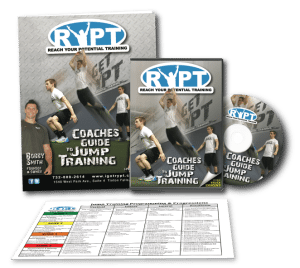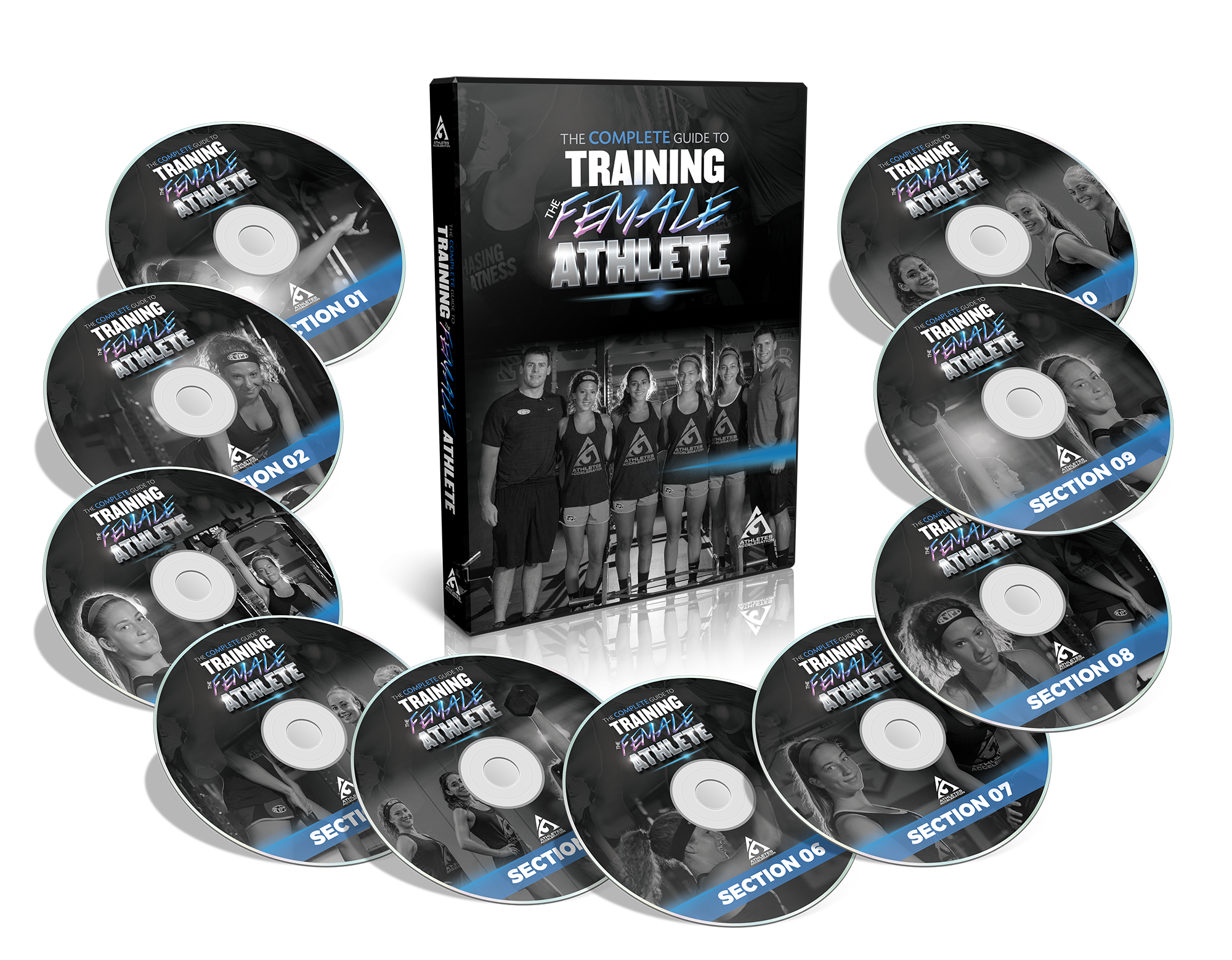The Versatility of the Tier System
Chris Tolzman
Sports Performance Coach
Georgetown University
Every so often, in every field, an idea comes around and makes an immediate impact on the masses. Compensatory Acceleration Training, Joint By Joint Approach, Linear Periodization, Triphasic Training, Conjugated Periodization have all contributed to the advancement of strength and conditioning protocols. I believe that the development of the Tier System is one of these impactful ideas that has made a huge impact on our field and more particularly, on my own coaching philosophy.
At the beginning of my professional career, I utilized the template (fig. 1) that Mike Boyle has popularized in his famous book Functional Training for All Sports. To this day the template is still used by many coaches throughout the nation. I had much success using Boyle’s template, however I felt overly committed to the exercise categories and wanted more freedom which led me to venture out and find other methods to structure training. Enter The Coach’s Strength Training Playbook by Coach Joe Kenn.
| Day 1 | Day 2 | Day 3 | Day 4 |
| Olympic Lift | Olympic Lift | Olympic Lift | Olympic Lift |
| Lower Body Push + Upper Body Pull | Upper Body Push + Lower Body Pull | Lower Body Push + Upper Body Pull | Upper Body Push + Lower Body Pull |
| Single-Leg Lower Push + Upper Body Pull | Upper Body Push + Lower Body Pull | Single-Leg Lower Push + Upper Body Pull | Upper Body Push + Lower Body Pull |
Fig. 1 Mike Boyle Training Template
Coach Kenn’s book really opened my eyes into what the possibilities were when it came to programming. Needless to say, once I started reading it, I couldn’t put it down. Every idea not only made sense but there was a valid explanation as to why Coach Kenn chose to do it that way. From that day forward my thoughts about programming were changed forever.
Fast forward 6 years, I am currently a Sports Performance Coach at Georgetown University with previous experience at American University as an Assistant Strength & Conditioning Coach. Those thoughts and ideas that were presented in Coach Kenn’s book are still present in my athletes training. To this very day, I still refer back to Coach’s Strength Training Playbook and Push, Jump, Punch for programming guidance. I believe the true beauty of the Tier System is its versatility to be utilized in whatever situation or circumstances that you have in your work setting.
While at American University, I had my first opportunity to utilize the Tier System to its fullest extent. The training ages of all the athletes were low, so my progression into a complete Tier System Template was a slow process starting from ground zero. This allowed the athletes to get used to the tempo and my expectations. At the time, the protocol at American University was the traditional Olympic Lifts [Total Body] first, progressing to your strength lifts [Upper and Lower Body], finally moving to your auxiliary work. I followed this protocol by taking moving all Total Body Lifts at the beginning of the workouts (fig. 2).
| Session T | Session L | Session U | |
| Tier 1 | Total Body [Priority] | Total Body [Minor] | Total Body [Major] |
| Tier 2 | Lower Body [Major] | Lower Body [Priority] | Upper Body [Priority] |
| Tier 3 | Upper Body [Minor] | Upper Body [Major] | Lower Body [Minor] |
| Tier 4 | Total Body [Auxiliary] | Lower Body [Auxiliary] | Upper Body [Auxiliary] |
| Tier 5 | Lower Body [Auxiliary] | Upper Body [Auxiliary] | Total Body [Auxiliary] |
Fig. 2 Modified Tier Template
Coach Kenn’s Note: On page 86 of the eBook, Athletic Based Strength Training – The Tier System, We introduce the coach to the Special Tier. The Special Tier was use during our traditional conversion to power phases of the annual plan. This was classified Tier 1A and was Total Body, which we started every session with after pre activity preparation. In this phase the total body movement was generally a hybrid variation. The hybrid always included the true total body movement first followed by part B which could have been a lower or upper body add on (snatch to overhead squat, hang clean to front squat, hang clean to press) or a secondary total body movement (clean to jerk, clean to push press)
The product of the program went very well with nearly 90% of all teams experiencing Personal Records during their Evaluation Period but the athletes experienced fatigued during their Lower Body and Upper Body Priority lifts from the Total Body exercises that preceded them. Once fatigue set in, the athletes lacked technique and concentration towards their priority lift. This led to me using “The Template” that Coach Kenn presented in Coach’s Strength Training Playbook, which places the priority exercise of the day at the beginning of the session (fig.3). Immediately I began to see great efficiency with the athlete’s technique and concentration during our priority lifts. I believe whole-heartedly that this was due to the fact that the athletes were fresh going into our priority lifts.
| Session T | Session L | Session U | |
| Tier 1 | Total Body [Priority] | Lower Body [Priority] | Upper Body [Priority] |
| Tier 2 | Lower Body [Major] | Upper Body [Major] | Total Body [Major] |
| Tier 3 | Upper Body [Minor] | Total Body [Minor] | Lower Body [Minor] |
| Tier 4 | Total Body [Auxiliary] | Lower Body [Auxiliary] | Upper Body [Auxiliary] |
| Tier 5 | Lower Body [Auxiliary] | Upper Body [Auxiliary] | Total Body [Auxiliary] |
Fig. 3 Traditional Tier System Template
“The Template” is still being utilized to this day with all of the teams that I have direct responsibility for (Men’s Lacrosse, Men’s Soccer, Women’s Volleyball). There are a couple ways that I manipulate “The Template” to suit both the sport coaches and my needs at the same time. For instance, during the postseason our training becomes more restorative. I single-out the Tier 1 exercises as our main priority lift as usual but Tiers 2-5 are performed in a circuit fashion (fig. 4). In addition, Tiers 2-5 are exercises that are the least stressful on the body (i.e. bodyweight, machine, DB variations). Also through the help of Coach Donnell Boucher and The Citadel staff, I’ve utilized what I consider “The Citadel Approach” which is a 3×3 with an auxiliary circuit at the end of the workout (fig. 5). This style of the tier system is utilized with teams who have a limited time frame to train (30-45 minutes).
| Session T | Session L | Session U | |
| Tier 1 | Total Body [Priority] | Lower Body [Priority] | Upper Body [Priority]] |
| Auxiliary Circuit x3-4 Rounds | |||
| Tier 2 | Lower Body | Upper Body | Total Body |
| Tier 3 | Upper Body | Total Body | Lower Body |
| Tier 4 | Total Body | Lower Body | Upper Body |
| Tier 5 | Lower Body | Upper Body | Total Body |
Fig. 4 Traditional Tier System Template with Circuit Option
| Session T | Session L | Session U | |
| Tier 1 | Total Body [Priority] | Lower Body [Priority] | Upper Body [Priority] |
| Tier 2 | Lower Body [Major] | Upper Body [Major] | Total Body [Major] |
| Tier 3 | Upper Body [Minor] | Total Body [Minor] | Lower Body [Minor] |
| Auxiliary Circuit x2-3 Rounds | |||
| Tier 4 | Total Body [Auxiliary] | Lower Body [Auxiliary] | Upper Body [Auxiliary] |
| Tier 5 | Lower Body [Auxiliary] | Upper Body [Auxiliary] | Total Body [Auxiliary] |
| PC | Posterior Chain [Straight] | Posterior Chain [Bent] | Posterior Chain [Straight] |
Fig. 5 Traditional Tier System Model with “Citadel Approach”
Coach Kenn’s Note: In early 2004 we started “Running the Hoop” [Circuit] with Tiers 4, 5, Neck, PC, PS at ASU. In our upcoming Book, we will be discussing how we use the 5 Movement Tiers as “Session Specific Readiness” for the Big Three Tiers of the MAIN SESSION
These examples are just a few of the ways a coach can use the Tier System to their advantage and present situation. Remember that nothing is set in stone and with the framework of the Tier System, a coach could apply the principles laid out in Coach’s Strength Training Playbook and see success. The only limitations a coach will have with the Tier System, is their own imagination and creativity.







